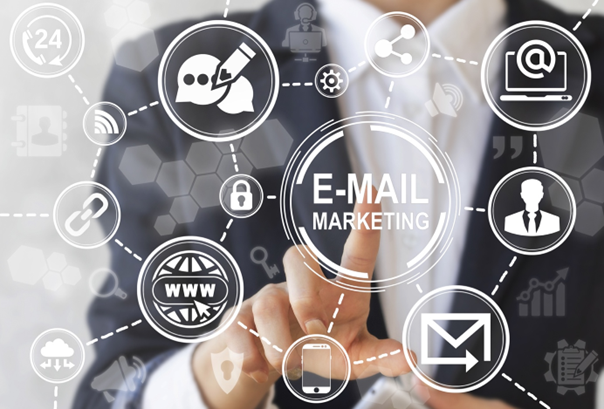
Email Marketing: Your Secret Weapon in Building a Powerful Sales Machine
When discussing marketing tools, many businesses might overlook one that’s been in their arsenal all along. Email. Yes, email! This humble communication platform is a powerhouse in disguise, and here’s why.
Why is Email Marketing Important?
In our fast-paced, social media-driven world, email marketing is a thing of the past. But you’d be mistaken.
Email is one of the few digital channels consumers use routinely, with around 3.9 billion users worldwide as of 2021. Moreover, email allows direct, personal communication with customers, preserving your message in the noisy social media landscape.
The ROI for email marketing is impressive. According to HubSpot, for every $1 you spend on email marketing, you can expect an average return of $42. And it’s not just about making sales. Email helps build relationships, boost brand awareness, distribute content, and promote events.
Why is Email Marketing often Not Effective?
Despite its potential, email marketing often fails to hit the mark. This typically happens when companies use a one-size-fits-all approach, treating their diverse customer base as a homogeneous group. A lack of personalization can lead to poor open rates, high unsubscribe rates, and a weak ROI.
Many businesses also need better email designs that grab attention or present a clear message. Overly aggressive sales pitches, irrelevant content, and emails that need to be mobile-friendly are other common culprits.
Will Email Marketing Die?
While there’s no crystal ball, one thing’s for sure: email marketing is far from dead. In fact, with the rise of advanced personalization and automation technologies, it’s evolving and becoming even more present than ever before.
How Does Email Marketing Work?
Email marketing involves sending emails to people to promote your business, products, or services. The process can be broken down into five key steps:
- Email Marketing Strategy
Like any other aspect of your business, email marketing needs a strategy. Defining your objectives, understanding your audience, and determining what kind of emails you’ll send are essential. The procedure involves all the following points. The strategy faces the current status quo and where the journey should go.
- Segmentation
Segmentation is dividing your audience into groups based on various attributes. This can significantly improve engagement and conversion rates. The five layers of Segmentation are:
- Behavioral Segmentation involves dividing your audience based on their interaction with your business, like website behavior or purchase history.
- Socio-demographic Segmentation: This is based on age, gender, income level, occupation, etc.
- Customer Journey Segmentation: This involves segmenting your audience based on their stage in the customer journey, from awareness to advocacy.
- Customer Lifetime Value Segmentation: This segments customer based on their projected economic value to your business over their lifetime.
- Psychometric Segmentation: This involves dividing your audience based on their attitudes, interests, lifestyles, and personality traits.
- Customer Data
You will need specific customer data to provide the best customer experience through email marketing. This can include contact information, buying habits, engagement with past emails, web browsing behavior, psychological data, and any other data that can help create a detailed customer profile.
- Customized Communication
Once you’ve segmented your audience, it’s time to tailor your communication. For instance, using psychometric Segmentation, you can customize the text, images, and product advertisements to align with the individual’s attitudes, interests, and personalities.
- Marketing Automation
Automation plays a crucial role in today’s email marketing. It allows you to send emails at the right time based on user behavior, like a welcome email after sign-up or a discount code after cart abandonment. Automation can also help you understand your customers’ content interests and boost engagement.
Building an Effective Email Marketing System
Constructing a successful email marketing system requires commitment, strategic planning, and a customer-centric mindset. Start with a well-defined strategy that aligns with your business goals. Understand your audience and segment them thoughtfully.
Collect and leverage customer data to tailor your emails for maximum engagement and conversion. And finally, harness the power of marketing automation to deliver the right message at the right time. With these steps, you’ll turn your email marketing into a powerful sales machine that delivers value repeatedly.
So, dust off your email list and get ready to reimagine what email can do for your business. The possibilities are endless.
Ready to unlock the treasure trove of insights that customer segmentation offers? Start implementing these layers today and see the impact on your business. Then book a meeting with our CEO for a first email marketing analysis of your own business – for free.
